Genre: Real-Time Strategy
Publisher: Atlus
Developer: Sting
Release Date: June 3, 2009
Knights in the Nightmare isn't an RPG that's designed for everyone. It's probably going to put off quite a few newcomers with the initial glut of tutorials alone; there are over 100 to read and watch, and I'm sure that's going to be annoy a lot of folks. However, if you manage to scratch your way past that initial surface, you'll find one of the best RPGs on the DS today, and I urge everyone to at least give it a shot.
On the surface, KitN looks a lot like your typical strategy role-playing game. There's a grid-based playing surface that involves a few friendly units and enemy units, and you'll manipulate your group to take out the enemy over a series of turns. That's pretty much where the comparison stops, though, and I'll try and detail the gameplay as well as I can, but keep in mind that it's something that needs to be seen to really get a grasp of how it works.
The plot revolves around a dead king and his kingdom, which has been more or less wiped out by evil forces. You play the part of the dead king, reawakened by a Valkyrie-esque warrior who wants you to gather up the undead forces and use them to drive back the darkness. This equates to controlling a wisp in the game (the wisp being the king) and using the touch-screen and stylus to navigate the top screen action, moving your wisp from unit to unit and activating them to start their battles.
The top screen displays the majority of the action; all of the characters, enemies and other obstacles are shown here. Each map on which you play is fairly small, usually a 5x5 grid with some small variations. Most maps will use default units, but you can switch those out for anyone you've managed to recruit so far, with a few exceptions. There are various classes to manage, including Duelists, L. Knights, Warriors, Wizards and so on, and they all have their own particular characteristics and abilities to set them apart.
Using the wisp, you activate a unit if you hover over it, which basically charges up an attack. As the attack charges, you'll see certain squares highlighted to depict the range of your attack, and this varies from character to character. If an enemy is in range, he'll also be highlighted, along with a percentage to show you how much damage you'll be able to deal. Elements come into play here too, with most monsters and player characters having some inherent element value, along with weapons that you can equip.
Once you lift the stylus off the touch-screen, you'll perform the attack, and a successful hit will often yield small crystals that you'll need to collect, which will replenish your magic point bar at the top of the screen. The magic comes into play when you begin to use weapons, and every swing will deplete the bar a level or so. On the right-hand side of the top screen is your current inventory, and before each round begins, you'll be able to switch out up to four different items. Weapons are tied into different classes, so you'll want to make sure you have a variety that corresponds with the composition of your current team. To use a weapon, you simply drag it over to the character you want to use it with and then activate him or her with the weapon in use. The weapon will not stay equipped, so you'll have to perform this action every time you want to use it, which is a slight annoyance. However, weapon-based attacks are infinitely stronger than your regular attacks, and they're key to winning most matches.
Instead of having a set amount of moves per round, you have a timer that counts down every time you perform an attack, whether it's successful or not. Along with that, the enemies will pour out "bullets" to attack your wisp, and if the wisp is hit by them, you'll also lose time. It's rare that enemies will attack anything other than the wisp, aside from a few boss encounters. The majority of the challenge comes from finishing off all the kills you need before you run out of rounds. Most fights consist of seven rounds or so, and if you don't manage to get the kills you need within that time, then the game's over (but there is a handy retry).
The art style of Knights in the Nightmare is obviously in tune with other titles by the developer Sting, who is responsible for titles like Yggdra Union on PSP and GBA and Riviera. The look translates well to the DS screen, with a lot of beautiful color and anime-inspired character designs that fit in well with the game's overall fantasy world. Each character and monster is distinct, and while you'll see a lot of the basic enemies repeated throughout the course of the game, the boss designs are especially fantastic, using large sprites to give off a surprising amount of detail.
Likewise, the game soundtrack is great and certainly full of memorable tracks for music fans. Shigeki Hayashi, also responsible for the tunes from Yggdra and Riviera, returns here to compose, and it definitely fits in with his signature style. Also, the title comes packaged with the soundtrack, which doesn't quite feature every single track, but it's a pretty massive track listing and well worth checking out.
 Aside from the fact that the game has a fairly steep learning curve early on, there isn't a lot to complain about when it comes to Knights in the Nightmare. While it is tough to get into, once you get accustomed to everything, it's an incredibly deep SRPG with a lot of reasons to run through the main game multiple times. There are a number of friendly units you can recruit — at least 100 individuals, apparently — and my initial game didn't even come close to that number. From what I understand, there are additional scenarios to see in subsequent new games and an increased difficulty that really amps up the challenge in Nightmare mode. Altogether, if you're a fan of RPGs in general, then you owe it to yourself to give KitN a try. It's a fantastic RPG on the DS and easily my favorite to hit the system since The World Ends With You.
Aside from the fact that the game has a fairly steep learning curve early on, there isn't a lot to complain about when it comes to Knights in the Nightmare. While it is tough to get into, once you get accustomed to everything, it's an incredibly deep SRPG with a lot of reasons to run through the main game multiple times. There are a number of friendly units you can recruit — at least 100 individuals, apparently — and my initial game didn't even come close to that number. From what I understand, there are additional scenarios to see in subsequent new games and an increased difficulty that really amps up the challenge in Nightmare mode. Altogether, if you're a fan of RPGs in general, then you owe it to yourself to give KitN a try. It's a fantastic RPG on the DS and easily my favorite to hit the system since The World Ends With You.
Score: 9.0/10
More articles about Knights in the Nightmare



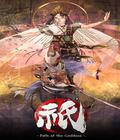
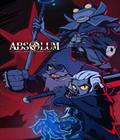
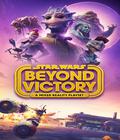

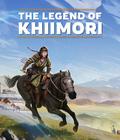



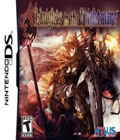 Knights in the Nightmare requires players to throw out everything they know about RPG and strategy games and embrace something altogether new and fresh. Frantic, energetic action mixes with thought-provoking tactical gameplay, all within a beautifully rendered fantasy setting and presented through a captivating, emotional narrative.
Knights in the Nightmare requires players to throw out everything they know about RPG and strategy games and embrace something altogether new and fresh. Frantic, energetic action mixes with thought-provoking tactical gameplay, all within a beautifully rendered fantasy setting and presented through a captivating, emotional narrative.


























